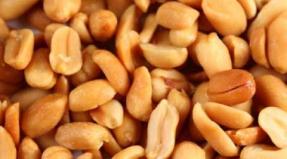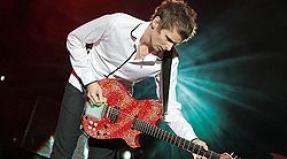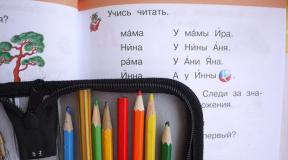General and local effect of physical exercise (load) on the human body. Fitness of the body The local effect of increasing fitness is associated with
When considering the training load as a system of formative influences, it was noted that the adaptive changes are based on the body's inherent ability of adaptive (selective) response, aimed at maintaining homeostasis.
The restoration of dynamic equilibrium in the internal environment of the organism and the expansion of its boundaries find the most vivid expression in the dynamics of recovery processes, its heterochronous nature, when a number of ingredients of the physicochemical status are restored over different times. Depending on how the recovery processes proceed and what traces they leave, we distinguish several states of the athlete (V.M.Zatsiorsky, I.T. Ter-Ovanesyan).
- 1. Operational condition, which changes under the influence of a single application of physical exercises and is transient (for example, fatigue caused by a single jogging for a given distance, increased performance after warming up, etc.). The operational state of an athlete, due to the great dynamics during a separate training session, must be known and monitored from the point of view of planning working and recovery intervals (their number, duration, etc.).
- 2. Current state, which changes under the influence of one or more workouts. It reflects the consequences arising from participation in competitions, performance of work in a particular activity, etc. These "traces" can have a positive or negative impact on the athlete. Control over the current state serves as the basis for planning in microcycles (the magnitude and nature of training loads in close training sessions, for example, a weekly cycle, etc.).
- 3. Permanent state which lasts for a long time - weeks and months and is characterized by stable indicators of general and special performance. These are different phases in the development of a sports form (overwork or insufficient training, etc.), which are the result of more prolonged adaptive changes in the structure and functions of the body.
The need for a differentiated approach to the athlete's state is determined by the phase structure of the adaptation process and the corresponding specific means of diagnosing it.
More important from the point of view of training goals is a permanent state, which gives us a generalizing characteristic of the level of general and special working capacity, i.e. shows the real capabilities of the body to achieve maximum sports results. It is this stable adaptation of the organism, which gives us a complex, permanent characteristic of an athlete's state and his abilities to achieve high sports results (in the corresponding type of motor activity), that we call "training".
We most often meet scientifically grounded ideas about fitness as a special qualitative characteristic of a person in the process of diagnosing an athlete's physical readiness, with an emphasized priority of medical and physiological methods. Despite the significant advances made by physicians and physiologists, the diagnosis of fitness as an integral problem is still very far from its complete solution. The main reason for this is a very complex structure of training, which includes both biological and psychological and socio-pedagogical elements. Consequently, along with biomedical information, data from pedagogical and psychological research are needed.
The most generalized fitness criterion is the athletic performance shown in official or control competitions. All aspects of sports training are "focused" in it. Analyzing the dynamics (first of all, stability) of sports results, one can judge about the changes in the level of fitness. But sports result precisely because of its generalization does not allow selective control of individual aspects of an athlete's training (physical, technical, etc.). Bearing in mind that in many sports the result is not expressed in sufficiently accurate quantitative values \u200b\u200band that many factors that play a stimulating or delaying role remain unexplained, it becomes clear that athletic achievement does not carry all the information necessary to assess fitness. This raises the question of a number of its additional, particular criteria. When selecting them, as is known, the following are taken into account: the functional state of the most important organs and systems of the athlete's body: the degree of their development and the nature of recovery processes after work; level of basic motor qualities; the degree of improvement of technique in this sport; the ability to use forces rationally in conditions of wrestling; abilities and skills in the field of sports tactics; the ability to maximize the manifestation of mental qualities, etc. (L.P. Matveev).
The biological characteristic of fitness is due to a whole complex of morphological, biochemical and physiological changes in the athlete's body. They are the object of the corresponding specialized sections of biological sciences (anatomy, biochemistry, physiology, etc.).
Fitness from a biological point of view, it is characterized in its most general form by an increase in the energy potentials of the organism and the possibilities of their rational use and restoration.
It is known that the energy fitness criteria are always associated with three types of capabilities: aerobic, anaerobic lactate (glycolytic) and anaerobic alactic. As a result of a number of studies (N. I. Yakovlev, N. V. Zimkin, N. I. Volkov, V. M. Zatsiorsky, G. S. Tumanyan, P. Astrand, Tsv. Zhelyazkov, K. Krystev, I. Iliev , R. Kosev, D. Dobrev, J. Afor and others) developed indicators to assess these opportunities.
- 1. Power indicator
Is the maximum amount of energy that each of the specified sources can provide per unit of time. The power indicator is determined by means of the corresponding particular criteria:
- aerobic power - VO2 max and critical work power (for example, critical running speed, etc.) at which maximum oxygen utilization is achieved;
- glycolytic capacity - lactate oxygen deficiency attributed to working hours, as well as the maximum increase in the amount of lactic acid and the accumulation of excess CO2 in the blood, changes in the buffering properties of the blood (pH, etc.);
- alactate power - alactate oxygen deficiency, CRF breakdown in working muscles, etc.
- 2... Capacity indicator - This is the total amount of work that can be realized due to one or another energy source.
Private capacity criteria are:
- capacity of aerobic processes - the total amount of absorbed oxygen, above the resting level, during the entire time of work, as well as the product of critical power and total working time;
- glycolytic capacity - the amount of lactate oxygen debt; the amount of lactates during work, the release of CO2 and the amount of blood buffer reserves;
- alactate capacity - the amount of oxygen debt and the total reserves of CrF in the muscles.
- 3. Performance indicator - it is the ratio between directly measurable losses and the amount of work performed (or the ratio of the IPC to the critical power of the work). When evaluating the biological side of fitness, aerobic capacity is often explored. However, at the same time, information is obtained on the activity of the cardiovascular system, whose productivity is the main factor. oxygen supply organism. Hence the importance of the problem of fitness criteria, expressed in the activity of cardio-vascular system.
For this purpose, CP and minute blood exchange are most often used. In order for the state of emergency to be able to judge the level of training of an athlete, it is necessary, first of all, to establish its dependence on the physical work performed. As VS Farfel notes, this dependence is physiologically not simple.
The amount of work done per unit of time (work power) is primarily related to the amount of energy expended. The power of work depends on the efficiency of the work, on its efficiency. For its part, energy expenditure can be expressed in terms of the amount of oxygen absorbed. However, these values \u200b\u200bare determined by the nature of the oxidized energy substances and the relationship between aerobic and anaerobic processes. Oxygen consumption is determined by the minute volume of blood, but the amount of oxygen in the blood depends not only on this, but also on the degree of oxidation of the blood. And the utilization of oxygen depends on the adequate distribution of blood in working and resting muscles, organs, etc.
Consequently, a number of complex physiological processes lie between the amount of work performed per unit of time and the HR for the same period, which, at first glance, exclude the possibility of a linear relationship between these two indicators. However, the physiology of sports in recent years has established a number of conditions under which the state of emergency can serve as an informative test about the fitness of an athlete. Studies by V. Karpman, K. Krastev and others show that such a real indicator is the work performed at a PE of 170 beats / min, the so-called PWC-170. This value is highly correlated with BMD (correlation coefficient 0.8-0.9).
It can be seen from the given examples that both integral and partial indicators can be used for the biological characteristics of fitness. The priority of certain indicators is determined by many factors: the purpose of the research (operational, current and staging), the object of research (age, gender, qualifications of the athlete), research conditions (on the field, in the laboratory, etc.), technical capabilities (equipment), etc. .d.
The sports-pedagogical characteristics of fitness are conditioned by a number of factors of physical, technical and tactical training. These factors are based on the corresponding autonomic and motor mechanisms, which should be identified, but are not a direct object of research of sports teachers. They are interested in such integral or particular criteria of fitness, which comprehensively cover the specificity of motor activity and are closely related, on the one hand, with the application of training means and methods, on the other, with sports achievement. In other words, the main task of diagnostics here is a holistic assessment of motor abilities and their manifestation in a specific sports competitive activity. If we exclude the sports result, which is the most generalizing criterion of the level of fitness, a number of particular criteria are used in practice, mainly specialized sports and pedagogical tests. First of all, it should be noted that at the moment the pedagogical aspects of control and assessment of fitness are not sufficiently developed. The main reason for this is the generalized nature of the information that interests us, and the associated objective difficulties for an accurate quantitative assessment of a number of basic parameters of motor activity, in which fitness is expressed. To this must be added the insufficient training of sports and pedagogical personnel in the field of exact sciences. This is most clearly manifested in the assessment of technical and especially tactical training, where the relationship between quality, skills and ability is extremely complex, which inevitably leads to the application of multivariate statistical analysis and other quantitative methods.
Psychological criteria fitness levels reflect various mental states and processes and are the subject of sports psychology. Most often, psychodiagnostics of fitness is associated with an assessment of mental stability in relation to the unfavorable influence of a number of factors, the ability to self-regulate mental states, the formation of optimal readiness for competitions, etc.
That which does not exercise dies; movement is life.
Habitat factors
Lecture 3
Socio-biological bases of adaptation of the human body to physical and mental activity,
1. Physical development of a person.
2. The role of exercises and functional indicators of the body's fitness.
Physical development -natural natural process of formation and changes in the morphological and functional properties of the organism in the continuation of individual life.
Physical development is characterized by changes in three groups of indicators:
1. Indicators of physique (body length, body weight, posture, volumes and shapes of individual parts of the body, the amount of fat deposition, etc.), which characterize, first of all, biological forms, or morphology of a person.
2. Indicators (criteria) of health, reflecting morphological and functional changes in the physiological systems of the human body. The functioning of the cardiovascular, respiratory and central nervous systems, digestive and excretory organs, thermoregulation mechanisms, etc. is of decisive importance for human health.
3. Indicators of the development of physical qualities (strength, speed, flexibility, endurance, agility).
Character physical development how the process of changing these indicators during life depends on many reasons and is determined by a number of regularities.
Physical development is determined to a certain extent laws of heredity, which should be taken into account as factors favorable or, conversely, hindering the physical improvement of a person.
The physical development process also obeys the law of age grading... It is possible to intervene in the process of human physical development in order to manage it only on the basis of taking into account the characteristics and capabilities of the human body at different age periods: during the period of formation and growth, during the period of the highest development of its forms and functions, during the aging period.
The physical development process obeys the law of unity of organism and environment and, therefore, essentially depends on the conditions of human life. Living conditions primarily include social conditions.
Of great importance for the management of physical development in the process of physical education are the biological law of exercise and the law of the unity of forms and functions of the body in its activity.
A general idea of \u200b\u200bphysical development is obtained by taking three main measurements:
1.determining body length;
2. body weight;
3. chest girth.
There are three levels of physical development: high, medium and low, and two intermediate above average and below average.
The formation and improvement of various morphophysiological functions and the organism as a whole depend on their ability for further development, which has a largely genetic (innate) basis and is especially important for achieving both optimal and maximum indicators of physical and mental performance. At the same time, one should know that the ability to perform physical work can increase many times, but up to certain limits, while mental activity has virtually no limitations in its development. Each organism has certain reserve capabilities.
Features of the morphological and functional state of different systems of the body, formed as a result of motor activity, are called physiological indicators of fitness.They are studied in a person in a state of relative rest, when performing standard loads and loads of various powers, including extreme ones.
The exercise process became the subject of scientific research under the influence of the evolutionary teachings of EC Lamarck and Charles Darwin only in the 19th century. In 1809, Lamarck published a material where he noted that in animals with a nervous system, organs that exercise develop, and organs that do not exercise, weaken and decrease. P.F. Lesgaft, a well-known anatomist and Russian public figure of the 19th - early 20th centuries, showed a specific morphological restructuring of the body and individual human organs in the process of exercise and training.
Famous Russian physiologists I.M. Sechenov and I.P. Pavlov showed the role of the central nervous system in the development of fitness at all stages of exercise during the formation of the adaptive processes of the body.
Among the indicators fitness at rest (the overall effect of regular exercise)can be attributed:
1.changes in the state of the central nervous system, an increase in the mobility of nervous processes, a shortening of the latent period of motor reactions;
2.changes in the musculoskeletal system (increased weight and increased volume skeletal muscle, muscle hypertrophy, accompanied by an improvement in their blood supply, positive biochemical changes, increased excitability and lability of the neuromuscular system);
3. changes in the function of the respiratory system (the respiratory rate in trained at rest is less than in untrained); circulation (heart rate at rest is also lower than that of untrained people); blood composition, etc .;
4. decrease in energy consumption at rest: due to the economization of all functions, the total energy consumption of a trained organism is lower than that of an untrained one, by 10-15%;
5. a significant reduction in the recovery period after physical activity of any intensity.
As a rule, an increase in general fitness for physical activity also has a nonspecific effect - an increase in the body's resistance to the action of unfavorable environmental factors (stressful situations, high and low temperatures, radiation, trauma, hypoxia), to colds and infectious diseases.
It is also pertinent to note here that prolonged use of extreme training loads, which happens especially often in "big sport", can lead to the opposite effect - suppression of immunity and an increase in susceptibility to infectious diseases.
Local effectincreased fitness, which is an integral part of the overall, is associated with an increase in the functionality of individual physiological systems.
Changes in blood composition.With regular exercise in the blood, the number of erythrocytes increases (with short-term intensive work - due to the release of erythrocytes from the "blood depots"; with prolonged intense exercise - due to the strengthening of the functions of hematopoietic organs). The hemoglobin content per unit of blood volume increases, and the oxygen capacity of the blood increases, which enhances its oxygen transport capacity.
At the same time, an increase in the content of leukocytes and their activity is observed in the circulating blood.
The fitness of a person also contributes to a better transfer of the concentration of lactic acid in the arterial blood that increases during muscular work. In untrained people, the maximum allowable concentration of lactic acid in the blood is 100-150 mg%, while in trained people it can increase up to 250 mg%, which indicates their great potential for performing maximum physical activity to maintain general active life.
Changes in the work of the cardiovascular system
Heart.Working with an increased load while performing active physical exercises, the heart inevitably trains itself, since in this case, the nutrition of the heart muscle itself improves through the coronary vessels, its mass increases, its size and functionality change.
Heart performance indicators are:
1. heart rate -a wave of oscillations propagating along the elastic walls of the arteries as a result of the hydrodynamic shock of a portion of blood ejected into the aorta under high pressure during the contraction of the left ventricle. The pulse rate corresponds to the heart rate (HR) and averages 60-80 beats / min. Regular physical activity causes a decrease in the resting heart rate due to an increase in the rest (relaxation) phase of the heart muscle. The limiting heart rate in trained people during physical activity is at the level of 200-220 beats / min. An untrained heart cannot reach such a frequency, which limits its capabilities in stressful situations.
2. blood pressure (BP)created by the force of contraction of the ventricles of the heart and the elasticity of the vascular walls. It is measured in the brachial artery. Distinguish between the maximum (systolic) pressure, which is created during the contraction of the left ventricle (systole), and the minimum (diastolic) pressure, which is observed during relaxation of the left ventricle (diastole). Normally, a healthy person aged 18-40 years at rest has a blood pressure equal to 120/80 mm Hg. Art. (in women, 5-10 mm lower). During physical exertion, the maximum pressure can rise to 200 mm Hg. Art. and more. After the cessation of the load in trained people, it quickly recovers, while in untrained people it remains elevated for a long time, and if intensive work continues, then a pathological condition may occur.
3. systolic blood volume at rest, which is largely determined by the force of contraction of the heart muscle, in an untrained person it is 50-70 ml, in a trained person - 70-80 ml, and with a rarer pulse. With intense muscular work, it fluctuates, respectively, from 100 to 200 ml or more (depending on age and fitness). The greatest systolic volume is observed with a pulse of 130 to 180 beats / min, while at a pulse above 180 beats / min, it begins to decrease significantly. Therefore, to increase the fitness of the heart and the general endurance of a person, physical activity with a heart rate of 130-180 beats / min is considered the most optimal.
4. minute blood volume - the amount of blood ejected by the ventricle within one minute.
The blood vessels, as already noted, ensure the constant movement of blood in the body under the influence of not only the work of the heart, but also the pressure difference in the arteries and veins. This difference increases with the growth of movement activity. Physical work helps to expand blood vessels, reduce the constant tone of their walls, and increase their elasticity.
The movement of blood in the vessels is also facilitated by the alternation of tension and relaxation of actively working skeletal muscles ("muscle pump"). With active physical activity, it has a positive effect on the walls of large arteries, the muscle tissue of which with a high frequency tenses and relaxes. During physical exertion, the microscopic capillary network is fully disclosed, which at rest is only used by 30-40%. All this allows you to significantly accelerate blood flow.
So, if at rest the blood makes a complete circulation in 21-22 s, then with physical exertion - in 8 s or less. At the same time, the volume of circulating blood can increase up to 40 l / min, which greatly increases the blood supply, and, consequently, the supply of nutrients and oxygen to all cells and tissues of the body.
Respiratory system changes
The work of the respiratory system (together with blood circulation) in terms of gas exchange, which is enhanced by muscular activity, is assessed by the respiratory rate, pulmonary ventilation, vital capacity of the lungs, oxygen consumption, oxygen debt and other indicators. It should be remembered that the body has special mechanisms that automatically control breathing. Even in an unconscious state, the breathing process does not stop. The main regulator of respiration is the respiratory center located in the medulla oblongata.
At rest, breathing occurs rhythmically, and the time ratio of inhalation and exhalation is approximately 1: 2. When performing work, the frequency and rhythm of breathing may change depending on the rhythm of movement.
The breathing rate (change of inhalation and exhalation and respiratory pause) at rest is 16-20 cycles. During physical work, the respiratory rate increases on average 2-4 times.
Respiratory volume- the amount of air passing through the lungs during one breathing cycle (inhalation, respiratory pause, exhalation). The value of the tidal volume is in direct proportion to the degree of fitness for physical activity. At rest, in untrained people, the tidal volume is 350-500 ml, in trained people - 800 ml or more. With intense physical work, it can increase to about 2500 ml.
Pulmonary ventilation- the volume of air that passes through the lungs in 1 min. Pulmonary ventilation is determined by multiplying the tidal volume by the respiratory rate. Pulmonary ventilation at rest is 5-9 liters. Its maximum value for untrained people is 110-150 liters, and for athletes it reaches 250 liters.
Lung vital capacity(VC) - the largest volume of air that a person can exhale after the deepest breath. Its value depends on age, body weight and length, sex, state of physical fitness of a person and on other factors. VC is determined using a spirometer. Its average value is 3000-3500 ml for women, 3800-4200 ml for men. In people engaged in physical culture, it significantly increases and reaches 5000 ml for women, 7000 ml and more for men.
Oxygen consumption- the amount of oxygen actually used by the body at rest or when performing any work in 1 min.
Maximum oxygen consumption(IPC) - the largest amount of oxygen that the body can assimilate during extremely hard work for it. BMD serves as an important criterion for the functional state of the respiratory and circulatory systems.
BMD is an indicator of the body's aerobic (oxygen) performance, i.e. his ability to perform intense physical work with a sufficient amount of oxygen entering the body to obtain the necessary energy. The BMD has a limit that depends on age, the state of the cardiovascular and respiratory systems, on the activity of metabolic processes and is in direct proportion to the degree of physical fitness.
For those who are not involved in sports, the VO2 max is at the level of 2-3.5 l / min. For high-class athletes, especially those involved in cyclic sports, the VO2 max can reach: for women - 4 l / min or more; for men - 6 l / min or more. An assessment of the intensity of physical activity is given with a focus on the IPC. So, the intensity below 50% of the BMD is regarded as light, 50-75% of the BMD - moderate, over 75% of the BMD - as severe.
Oxygen debt- the amount of oxygen required for the oxidation of metabolic products accumulated during physical work. With prolonged intensive work, a total oxygen debt arises, the maximum possible value of which for each person has a limit (ceiling). Oxygen debt is formed when the oxygen demand of the human body is higher than the ceiling for oxygen consumption at the moment. For example, when running 5000 m, the oxygen demand of an athlete covering this distance in 14 minutes is 7 liters per minute, and the ceiling for this athlete's consumption is 5.3 liters, therefore, an oxygen debt of 1 is generated in the body every minute. , 7 l.
Untrained people are able to continue to work with a debt not exceeding 6-10 liters. High-class athletes (especially in cyclic sports) can perform such a load, after which an oxygen debt of 16-18 liters or even more arises. The oxygen debt is liquidated after the end of work. The time of its elimination depends on the duration and intensity of work (from several minutes to 1.5 hours).
Oxygen starvation of the body- hypoxia. When less oxygen is supplied to the tissue cells than is needed to fully ensure energy consumption (i.e. oxygen demand), oxygen starvation, or hypoxia, occurs. It can occur not only due to oxygen debt during physical activity of increased intensity. Hypoxia can occur for other reasons, both external and internal.
The following types of hypoxia are distinguished:
1. motor - with intense muscular load (which everyone felt on the final segment when running a long distance);
2. hypoxic - with a decrease in the partial pressure in arterial blood due to external causes;
3. circulatory (stagnant) - with local disorders of blood circulation due to prolonged uncomfortable postures, due to hypokinesia or heart failure;
4.Anemic - due to a decrease oxygen tank blood (for blood loss and other reasons).
There are other causes of hypoxia associated with pathological conditions.
Changes in the musculoskeletal and other body systems during exercise
Regular physical activity increases the strength of bone tissue, increases the elasticity of muscle tendons and ligaments, and increases the production of intra-articular (synovial) fluid. All this contributes to an increase in the range of motion (flexibility).
With regular physical exertion, the body's ability to store in the muscles (and liver) a supply of carbohydrates in the form of glycogen increases and thereby improve the so-called tissue respiration of muscles. If the average value of this reserve is 350 g in an untrained person, then in an athlete it can reach 500 g. This increases their potential for the manifestation of not only physical, but also mental performance.
Metabolism
Any human activity is associated with energy expenditure, and therefore with the necessary metabolism. Metabolic processes are very intensive. Almost half of the body tissues are renewed or completely replaced within three months (for 5 years of study, the cornea of \u200b\u200bthe eye in students is replaced 350 times, and the stomach tissues are renewed about 500 times). For the normal course of these processes, the breakdown of complex organic substances entering the human body is required.
The most important substances are proteins, carbohydrates, fats (with the participation of water, mineral salts, vitamins). Not all of them are equally involved in energy supply. different types human life, various manifestations of his motor activity.
Energy exchange.
The exchange of substances between the body and the external environment is accompanied by the exchange of energy. The most important physiological constant of the human body is the minimum amount of energy that a person spends in a state of complete rest. This constant is called basic exchange.Its value depends on body weight: the larger it is, the greater the exchange, but this dependence is not straightforward.
The body's need for energy is estimated in kilocalories. Naturally, this need depends on a number of factors: the level of basal metabolism, the intensity of the work performed, etc. The ratio of the amount of energy that has entered the body with food and consumed is called energy balance,and it is closely dependent on the nature of life.
If the minimum value of daily energy consumption is normally 2950-3850 kcal (of course, depending on age, gender and body weight), then at least 1200-1900 kcal of them should be spent on muscle activity. The rest of the energy costs ensure the maintenance of the body's vital activity in a state of rest, the normal activity of the respiratory and circulatory systems, metabolic processes, etc. (basal metabolic energy).
Energy expenditure is closely related to the characteristics of various physical exercises.
Is a measure of the impact of exercise on the athlete's body.Analyzing the factors that determine the physical training effects of exercises, one can distinguish:
1) functional effects of training;
2) threshold loads for the occurrence of training effects;
3) reversibility of training effects;
4) the specificity of training effects;
5) trainability.
The systematic performance of a certain type of physical exercise causes the following main positive functional effects:
1. Strengthening the maximum functionality of the whole organism, is determined by the growth of maximum indicators when performing tests.
2. Increasing the efficiency, efficiency of the whole organism, manifests itself in a decrease in functional shifts in the activity of body systems when performing a certain work.
These positive effects are based on:
1. Structural and functional changes in the leading organs of vital activity when performing a certain work.
2. Improvement of cellular regulation of functions in the process of performing physical exercises.
The magnitude of the loads can be characterized, on the one hand, by external, internal and combined parameters, and on the other hand, by absolute and relative values.
External parameters of the load characterize the amount of mechanical work performed by the athlete or its duration. And the internal load indicators illustrate the magnitude of the body's response to the performed mechanical work.
The magnitude of the load is determined by the parameters:
1) volume - determined by the duration of the work, the length of the repeated segments;
2) intensity - the result, the amount of repetitions with maximum effort;
3) rest interval;
4) the nature of the rest;
5) the number of repetitions.
In this case, the direction of the impact of training loads on the athlete's body is determined by the ratio of the following indicators:
the intensity of the exercise;
volume (duration) of work;
the duration and nature of the rest intervals between individual exercises;
the nature of the exercises.
Each of these parameters plays an independent role in determining the training efficiency, however, their interconnection and mutual influence are no less important.
Load intensity It is closely interconnected with the developed power when performing exercises, with the speed of movement in sports of a cyclical nature, the density of tactical and technical actions in sports games, fights and fights in single combats. By changing the intensity of work, one can promote the preferential mobilization of certain energy suppliers, intensify the activity of functional systems to varying degrees, and actively influence the formation of the main parameters of sports equipment.
The following dependence appears - an increase in the volume of actions per unit of time, or the speed of movement, as a rule, is associated with a disproportionate increase in the requirements for energy systems that carry the predominant load when performing these actions.
There are several physiological methods for determining the intensity of the exercise. The direct method is to measure the rate of oxygen consumption (l / min) - absolute or relative (% of maximum oxygen consumption). All other methods are indirect, based on the existence of a relationship between the intensity of the load and some physiological indicators.
One of the most convenient metrics is heart rate. The basis for determining the intensity of the training load by heart rate is the relationship between them, the greater the load, the greater the heart rate.
The relative working heart rate (% HRmax) is the percentage of the heart rate during exercise and the maximum heart rate for a given person. An approximate heart ratemax can be calculated using the formula:
HRmax \u003d 220 - person's age (years) beats / min.
When determining the intensity of training loads by heart rate, two indicators are used: threshold and peak heart rate. Heart rate threshold is the lowest intensity below which the training effect does not occur. Peak heart rate is the highest intensity that should not be exceeded as a result of exercise. Approximate indicators of heart rate in healthy people involved in sports can be threshold - 75% and peak - 95% of the maximum heart rate. The lower the level of physical fitness of a person, the lower the intensity of the training load should be.
Areas of work by heart rate beats / min.
1.up to 120 - preparatory, warm-up, basic exchange;
2. up to 120-140 - restorative and support;
3. up to 140–160 - developing endurance, aerobic;
4. up to 160-180 - developing high-speed endurance;
5. more than 180 - speed development.
Workload... To increase the alactate anaerobic capabilities, short-term loads (5–10 s) with extreme intensity are most acceptable. Long pauses (up to 2–5 minutes) allow recovery. The work of maximum intensity, which is highly effective for improving the glycolysis process, leads to a complete depletion and to an increase in the reserve of lactate anaerobic sources during exercise. Work mainly due to glycolysis usually lasts for 60–90 s. Rest pauses during such work should not be long, so that the lactate value does not significantly decrease. This will improve the power of the glycolytic process and increase its capacity. Prolonged aerobic exercise leads to the intense involvement of fats in metabolic processes, and they become the main source of energy.
Comprehensive improvement of various components of aerobic performance can be provided only with fairly long single loads or with a large number of short-term exercises.
As long-term work of varying intensity is performed, not so much quantitative but qualitative changes in the activity of various organs and systems occur.
The ratio of the intensity of the load (the pace of movements, the speed or power of their fulfillment, the time to overcome the training segments and distances, the density of the exercises per unit of time, the magnitude of the burdens overcome in the process of developing strength qualities, etc.) and the volume of work (expressed in hours, in kilometers, number training sessions, competitive starts, games, fights, combinations, elements, jumps, etc.) changes depending on the skill level, fitness and functional state of the athlete, his individual characteristics, the nature of the interaction of motor and vegetative functions. For example, work of the same volume and intensity causes different reactions among athletes of different qualifications.
Moreover, the ultimate (large) load, which naturally assumes different volumes and intensity of work, but leads to the refusal to perform it, causes different internal reactions in them. This is manifested, as a rule, in the fact that in high-class athletes with a more pronounced reaction to the extreme load, the recovery processes proceed more intensively.
The length and nature of the rest intervals should be planned depending on the tasks and the training method used. For example, in interval trainingaimed at predominantly increasing aerobic performance, one should focus on the rest intervals at which the heart rate decreases to 120-130 beats / min. This makes it possible to cause shifts in the activity of the circulatory and respiratory systems, which are most conducive to increasing the functional capabilities of the heart muscle.
One of the main issues in physical training is the choice of optimal loads, such as those that result in the greatest adaptive effect after recovery. In addition, the load can be habitual, which does not cause adaptive shifts, or maximum, during which functional shifts occur up to the adaptation limit.
In the process of training, an increase in the functional capabilities of individual organs and the whole organism occurs if the systematic loads are significant. In terms of their size, they reach or exceed the threshold load, which should be higher than the daily one.
The basic rule in the choice of threshold loads is that they must correspond to the current functional capabilities of the person. The principle of individualization is largely based on the principle of threshold loads.
Training loads are determined by the tasks facing the athletes. This could be:
1. Rehabilitation after all kinds of illnesses, including chronic ones.
2. Recreational and recreational activities to relieve psychological and physical stress after work.
3. Maintaining fitness at the current level.
4. Improving physical fitness. Development of the functional capabilities of the body.
Training loads are subdivided into:
1. by nature:
training;
competitive;
2.According to the degree of similarity with a competitive exercise:
specific;
non-specific;
3.in terms of load:
near-limiting;
limit;
4. by direction:
improving motor qualities;
improving components of motor qualities (alactate or lactate anaerobic capabilities, aerobic capabilities);
improving the technique of movements;
improving components of mental readiness
improving tactical skills;
5.in coordination complexity
coordination abilities that do not require significant mobilization;
associated with the performance of movements of high coordination complexity;
6. for mental tension
tense;
less stressful.
7.the largest impact on the body:
developing;
stabilizing;
restorative.
Specific loads are loads that are significantly similar to competitive ones in terms of the nature of the displayed abilities and reactions of functional systems.
Developing loads - characterized by high impacts on the main functional systems of the body and causing a significant level of fatigue. Such loads require a recovery period for the most involved functional systems of 24–96 hours.
Stabilizing loads, affect the athlete's body at the level of 50-60% in relation to heavy loads and require the restoration of the most tired systems from 12 to 24 hours
Recovery loads these are loads at the level of 25–30% in relation to large ones and requiring recovery no more than 6 hours.
Signs of the effectiveness of training loads include:
1) specialization, i.e. a measure of similarity to a competitive exercise;
2) tension, which manifests itself when certain energy supply mechanisms are activated;
3) the value of the load, as a quantitative measure of the impact of the exercise on the athlete's body.
The classification of training loads gives an idea of \u200b\u200bthe modes of work in which different exercises should be performed, used in training aimed at developing different motor abilities.
In the classification of training and competitive loads, there are five zones that have certain physiological boundaries.
These zones have the following characteristics.
Aerobic recovery zone... The closest training effect of loads in this zone is associated with an increase in heart rate up to 140-145 beats / min. Lactate in the blood is at rest and does not exceed 2 mmol / L. Oxygen consumption reaches 40–70% of the VO2 max. Energy supply occurs due to the oxidation of fats (50% or more), muscle glycogen and blood glucose. The work is provided by completely slow muscle fibers, which have the properties of complete utilization of lactate, and therefore it does not accumulate in the muscles and blood. The upper limit of this zone is the rate (power) of the aerobic threshold (lactate 2 mmol / l). Work in this area can take from several minutes to several hours. It stimulates recovery processes, fat metabolism in the body improves aerobic capacity (general endurance).
Loads aimed at developing flexibility and coordination of movements are performed in this zone. The methods of the exercise are not regulated.
The amount of work during a macrocycle in this zone in different types sports accounts for 20 to 30%.
Aerobic development zone... The short-term training effect of loads in this zone is associated with an increase in heart rate up to 160-175 beats / min. Blood lactate up to 4 mmol / l, oxygen consumption 60–90% of the BMD. Energy is provided through the oxidation of carbohydrates (muscle glycogen and glucose) and, to a lesser extent, fat. Work is provided by slow muscle fibers and fast muscle fibers, which are turned on when performing loads at the upper boundary of the zone - the speed (power) of the anaerobic threshold.
Fast muscle fibers that enter into work are able to oxidize lactate to a lesser extent, and it slowly gradually increases from 2 to 4 mmol / L.
Competitive and training activities in this area can also take several hours and are associated with marathon distances, sports games. It stimulates the education of special endurance, requiring high aerobic abilities, strength endurance, and also provides work to foster coordination and flexibility. Basic methods: continuous exercise and interval exercise.
The volume of work in this zone in the macrocycle in different sports ranges from 40 to 80%.
Mixed aerobic-anaerobic zone... The short-term training effect of loads in this zone is associated with an increase in heart rate up to 180-185 beats / min, blood lactate up to 8-10 mmol / l, oxygen consumption 80-100% of the VO2 max. Energy provision occurs mainly due to the oxidation of carbohydrates (glycogen and glucose). Work is provided by slow and fast muscle units (fibers). At the upper border of the zone - the critical speed (power) corresponding to the VO2 max, fast muscle fibers (units) are connected, which are not able to oxidize lactate accumulating as a result of work, which leads to its rapid increase in muscles and blood (up to 8-10 mmol / l ), which reflexively also causes a significant increase in pulmonary ventilation and the formation of oxygen debt.
Competitive and training activities in a continuous mode in this zone can last up to 1.5-2 hours. Such work stimulates the education of special endurance, provided by both aerobic and anaerobic-glycolytic abilities, and strength endurance. Basic methods: continuous and interval extensive exercise. The volume of work in the macrocycle in this area in different sports ranges from 5 to 35%.
Anaerobic-glycolytic zone. The closest training effect of loads in this zone is associated with an increase in blood lactate from 10 to 20 mmol / L. The heart rate becomes less informative and is at the level of 180-200 beats / min. Oxygen consumption gradually decreases from 100 to 80% of the VO2 max. Energy is provided by carbohydrates (both with the participation of oxygen and anaerobic). Work is performed by all three types of muscle units, leading to significant increases in lactate concentration, pulmonary ventilation and oxygen debt. The total training activity in this zone does not exceed 10-15 minutes. It stimulates the education of special endurance and especially anaerobic glycolytic capacity.
Competitive activity in this zone lasts from 20 seconds to 6-10 minutes. The main method is interval strenuous exercise. The volume of work in this zone in the macrocycle in different sports ranges from 2 to 7%.
Anaerobic-alactate zone... The short-term training effect is not related to the heart rate and lactate indicators, since the work is short-term and does not exceed 15 - 20 s in one repetition. Therefore, blood lactate, heart rate and pulmonary ventilation do not have time to reach high levels. Oxygen consumption drops significantly. The upper limit of the zone is the maximum speed (power) of the exercise. The supply of energy occurs anaerobically due to the use of ATP and CF, after 10 s, glycolysis begins to connect to energy supply, and lactate accumulates in the muscles. Work is provided by all types of muscle units. The total training activity in this zone does not exceed 120-150 s for one training session. It stimulates the education of high-speed, speed-strength, maximum-strength abilities. The volume of work in the macrocycle in different sports is from 1 to 5%.
In cyclic sports associated with the predominant manifestation of endurance, for more accurate dosing of loads, the mixed aerobic-anaerobic zone is sometimes divided into two subzones.
The first consists of competitive exercises lasting from 30 minutes to 2 hours
The second - exercises lasting from 10 to 30 minutes.
The anaerobic-glycolytic zone is divided into three subzones:
In the first, the competitive activity lasts about 5 to 10 minutes; in the second - from 2 to 5 minutes; in the third - from 0.5 to 2 minutes.
When planning the duration of rest between repetitions of an exercise or different exercises in the same session, three types of intervals should be distinguished.
1. Full (ordinary) intervals, guaranteeing by the time of the next repetition, practically the same restoration of working capacity, which was before its previous execution, which makes it possible to repeat the work without additional stress of functions.
2. Intense (incomplete) intervals, at which the next load falls on the state of some under-restoration of working capacity.
3. "Minimax" interval. This is the smallest rest interval between exercises, after which there is an increased working capacity (supercompensation), which occurs under certain conditions due to the regularities of the recovery process.
When training strength, speed and agility, repetitive loads are usually combined with full and "minimax" intervals. Endurance training uses all types of rest intervals.
By the nature of the athlete's behavior, rest between individual exercises can be active and passive. With passive rest, the athlete does not perform any work, with active rest, he fills in the pauses with additional activity. The effect of active rest depends primarily on the nature of fatigue: it is not detected with light previous work and gradually increases with an increase in its intensity. A little intensive work in pauses has the greater a positive effect, the higher the intensity of the previous exercises was.
Compared to the intervals of rest between exercises, the intervals of rest between classes have a more significant effect on the recovery processes, long-term adaptation of the body to training loads.
The heterochronism (non-simultaneity) of the restoration of various functional capabilities of the body after training loads and the heterochronism of adaptation processes allow, in principle, to train daily and more than once a day without any phenomena of overwork and overtraining.
The effect of these influences is variable and depends on the duration of the load and its direction, as well as the magnitude.
In this regard, a distinction is made between the short-range training effect (BTE), the track training effect (STE), and the cumulative training effect (CTE).
BTE is characterized by the processes occurring in the body directly during exercise, and those changes in the functional state that occur at the end of the exercise or lesson. STE is a consequence of performing an exercise, on the one hand, and the response of body systems to a given exercise or lesson, on the other.
At the end of the exercise or lesson in the period of subsequent rest, a trace process begins, which is a phase of relative normalization of the functional state of the body and its working capacity. Depending on the beginning of the repeated load, the body may be in a state of underrecovery, a return to its original working capacity, or in a state of supercompensation, i.e. higher performance than the original.
With regular training, the trace effects of each training session or competition, constantly overlapping each other, are summed up, as a result of which a cumulative training effect arises, which is not reduced to the effects of individual exercises or sessions, but is a derivative of a combination of various trace effects and leads to significant adaptive (adaptive) changes in the state of the athlete's body, an increase in his functional capabilities and sports performance.
The duration and degree of change in individual parameters of the load in different phases of its wave-like oscillations depends on:
absolute value of loads;
the level and pace of development of an athlete's fitness;
features of the sport;
stages and periods of training.
At the stages immediately preceding the main competition, the wavelike change in loads is primarily due to the patterns of "lagging transformation" of the cumulative effect of training. Outwardly, the phenomenon of delayed transformation is manifested in the fact that the peaks of sports results seem to lag behind the peaks of the volume of training loads in time: the acceleration of the growth of the result is observed not at the moment when the volume of loads reaches especially significant values, but after it has stabilized or decreased. Hence, in the process of preparing for the competition, the problem of regulating the dynamics of the load is brought to the fore in such a way that their overall effect is transformed into a sports result within the planned time frame.
From the logic of the ratios of the parameters of the volume and intensity of loads, the following rules can be derived regarding their dynamics in training:
1) the lower the frequency and intensity of training sessions, the longer the phase (stage) of a steady increase in loads can be, but the degree of their increase each time is insignificant;
2) the denser the mode of loads and rest in training and the higher the total intensity of the loads, the shorter the periods of wave-like oscillations in their dynamics, the more often “waves” appear in it;
3) at the stages of a particularly significant increase in the total volume of loads (which is necessary to ensure long-term adaptation of a morphological and functional nature), the proportion of high intensity loads and the degree of its increase are limited the more, the more the total volume of loads increases, and vice versa;
4) at the stages of a particularly significant increase in the total intensity of loads (which is necessary to accelerate the development of special training), their total volume is limited the more, the more significantly the relative and absolute intensity increase.
Definition of light load, medium load, heavy load, heavy load. Gas exchange. What is sports uniform. Classification of sportswear. Fitness, physical indicators during fitness, functional changes, fitness level.
There is a classification of physical activity:
- activates the activity of supporting systems, stabilizes motor and autonomic functions, does not cause fatigue. - stabilizes the work of supporting systems, is important for maintaining the level of fitness. - causes a significant increase in physiological functions, contributes to the growth of fitness. - causes significant physiological changes, causes the development of non-compensatory fatigue.Adequate to the physiological state (age, level of fitness)Near-limit (stressful loads) - cause shifts and a training effect.
Determination of the value of the load is carried out by taking into account energy consumption and the volume of consumed oxygen during operation, and after its termination during the recovery period (accounting for oxygen debt).
Changes in functional indicators during training: MO, IOC, HR, VL.
Sports training improves the coordination of the functions of blood circulation and respiration, which ensures an increase in efficiency.
IPC - an indicator of efficiency, reflects the state of the respiratory and CVS of a person.
Heart rate reflects the level of loads (exhausting at heart rate \u003d 180-210).
Near-limit or training (160-180).
Multidirectionality of functional shifts is observed:
- Dominant systems are activated, others are inhibited.
- Sweating, activation of thermoregulation processes, because during exercise, an increase in body temperature is observed, which corresponds to an increased consumption of oxygen.
- Changes in the internal environment (pH shift, increased osmotic pressure of blood, blood viscosity, energy production processes).
Sports form and stages of its formation
Sports uniforms - a high optimal level of readiness to achieve high sports results. It is characterized by a complex of physiological, pedagogical and mental characteristics. The process of becoming a sports form has three phases:
- the acquisition of sports uniforms;
- keeping fit;
- temporary loss of sports form.
Phase one corresponds to the preparatory period, where higher levels of functioning of all body systems are formed, on the basis of which a sports form arises.
Second phase corresponds to the competitive period or the period of constant training and is characterized by the stabilization of a high level of physiological systems. In this phase, there is a further improvement of all components that ensure sports performance. Fluctuations in sports results are possible, but they are caused not by the level of physiological ceilings, but by technical, tactical, psychological training.
Third phase characterized by a change in the direction of adaptation processes, switching the mode of body functions to the rehabilitation level, weakening or partial destruction of temporary connections. (termination of classes)
The level of sports form changes depending on a number of physiological laws:
- Sports form is an external state of physiological systems for a certain level of athletic performance.
- Due to the prolonged exposure to high training and competitive loads, a protective reaction of the body occurs, directed against overvoltage.
- Maintaining a dynamic balance between physiological functions and the level of motor activity is provided by the central nervous system. Constant stressful situations can lead to overwork of the central nervous system.
- The decrease in the level of performance caused by interruptions in training (illness, injury, etc.) largely depends on the level of hypokinesia. The reversibility of training effects is manifested after an increase in training loads and is possible only with systematic training with a suprathreshold intensity. This most important biological factor is the basis of the principles of repetition and systematicity. In this case, the target setting is very important: maintaining or increasing the training effect.
Physiological indicators of fitness
Fitness - a high level of special performance.
The fitness state is determined under the conditions:
- At rest (fitness is characterized by a decrease in the physiological parameters of the autonomic systems).
- During physical exertion (testing at dosed standard and extreme loads - in this case, a faster response is observed, the level of changes in physiological functions is less pronounced than in untrained ones).
- After physical exertion during the recovery period (recovery processes proceed much faster).
Functional changes that provide and occur during the development of fitness:
- CNS - mobility of nervous processes, clarification of differentiations and increased activity of sensory systems
- Neuromuscular apparatus - increase muscle mass, improved blood supply to muscles by increasing the number of capillaries, the ability to voluntary muscle relaxation
- Increase in carbohydrate stores and decrease in fat
- Increased lung volumes and capacities, decreased respiratory rate, increased VC, increased depth of inspiration,
- An increase in the size of the heart, a decreased heart rate, enlarged heart cavities, an increase in the volume of circulating blood.
- The given levels of physiological functions indicate a more rational and economical use of the body's reserves.
Adaptation reflects the state of fitness level
There is a state of fitness - the improvement of technical and physical qualities - the unity of the process.
Short-term and intense loads occur with a large oxygen deficiency. Lack of oxygen activates the mobilization of oxygen resources and the oxygen transport system, has a high beneficial effect, which manifests itself in the economy of use, an increase in the utilization of oxygen and the reserves of the body as a whole.
What is body fitness? Let's say you decided to go for a run for the first time after school, university, or the army, where sport was an obligatory part of the process. Suppose, on your first outing on the track, you mastered one circle with shortness of breath and curses. The next day, you will run the same circle almost calmly. In the third workout, it will be very easy to overcome the circle: it means that you can increase the distance. Step by step, gradually increasing the load, you teach the body to cope with it. In a month you can freely run a kilometer, in six months - ten. Take a look at the person you were 6 months ago: for him, running 10 km was as impracticable as going into space. However, with training, the boundaries of possibilities expand.
It is impossible to cope with the load indefinitely, someday any athlete reaches the peak of his form - the level of results above which he physically cannot rise.
Over the years of training, the body in ordinary life learns to live in a more economical mode. For stayers, for example, the resting heart rate is 40-55 beats per minute (the normal pulse of an untrained person is 60-80 beats per minute); reduced pressure, about 100/60 mm Hg. Art. (norm - 120/80), which excludes the possibility of heart attacks, with an increase, it will not go beyond the critical values; the number of breaths per minute decreases to 12-14 versus 16-20 in untrained people, the depth of breathing increases. However, all these positive phenomena can be observed only with the correct training structure. Otherwise, there is a high probability of deterioration in the work of organs. Right training process runner consists not only of increasing the mileage, but also of strength training (to strengthen the muscular corset and muscles of the limbs), active games (,) to develop speed skills - for recovery. For an athlete participating in a competition, the annual training cycle is divided into several stages:
- preparatory (general and special physical training);
- competitive (recruitment, preservation and temporary decrease in sports form);
- transitional (active and passive rest).
This division is due to the fact that an athlete cannot be in peak shape for a long period of time, therefore the entire training process performs the main task - to bring an athlete to peak shape during important starts.
Morphofunctional and metabolic characteristics of fitness
To characterize the state of fitness, physiological indicators are studied at rest, during standard (non-maximum) and extreme loads. In trained individuals at rest, as well as during the performance of standard non-maximum loads, it is noted function economization phenomenon - less pronounced functional changes than in untrained or low-trained individuals. In the case of using maximum physical activity, it is noted the phenomenon of enhancing maximum functionality to extreme values \u200b\u200b(Bepocerkovsky, 2005, Dubrovsky, 2005; Kots, 1986).
IN resting state the fitness of the body is evidenced by: left ventricular hypertrophy in 34% of cases and in 20% - hypertrophy of both ventricles, an increase in heart volume (up to a maximum of 1700 cm3), a slowdown in heart rate to 50 bpm -1 or less (bradycardia), sinus arrhythmia and sinus bradycardia, a change in the characteristics of the P and T waves. In the external respiration apparatus, an increase in VC is noted (up to a maximum of 9000 ml) due to the development of respiratory muscles, a slowdown in the respiratory rate to 6-8 cycles per minute. The breath holding time increases (up to about 146 s), which indicates a greater ability to tolerate hypoxia.
In the blood system of athletes at rest, the volume of circulating blood increases by an average of 20%, the total number of erythrocytes, hemoglobin (up to 170 gg1), which indicates a high oxygen capacity of the blood.
The indicators of the fitness of the locomotor apparatus are: reduction of motor chronaxia, a decrease in the difference in the values \u200b\u200bof chronaxia of antagonist muscles, an increase in the ability of muscles to tension and relaxation, improvement of proprioceptive muscle sensitivity, etc.
During standard (non-maximal) physical activity fitness indicators are less severity of functional changes in trained individuals compared with untrained.
During extreme physical activity there is a phenomenon of increasing the implementation of functions: heart rate rises to 240 beats min -1, IOC - up to 35-40 l-min -1, pulse pressure increases, PV reaches 150-200 l min, V0 2 max-6-7 l-min -1, MKD-22 l and more, the maximum concentration of lactate in the blood can reach 26 mmol-l-1, the pH of the blood shifts towards lower values \u200b\u200b(to pH \u003d 6.9), the concentration of glucose in the blood can decrease to 2, 5 mmol-l-1, TANM in trained individuals occurs when oxygen consumption is at the level of 80-85% V0 2 max (Dubrovsky, 2005; Kurochenko, 2004; Physiological mechanisms of adaptation, 1980; Physiological testing of athletes ..., 1998).
Exercise testing should use physical activity that meets the following requirements:
- so that you can measure the work done and reproduce it in the future;
- so that it is possible to change the intensity of work within the required limits;
- so that a large mass of muscles is involved, which provides the necessary intensification of the oxygen transport system and prevents the occurrence of local muscle fatigue;
- be fairly simple, accessible and do not require special skills or high coordination of movements.
Stress testing usually uses bicycle ergometers or hand-held ergometers, steps, treadmills (Physiological testing of athletes ..., 1998; Sports medicine. Practical ..., 2003).
The advantage veloergometry is that the load power can be clearly dosed. The relative immobility of the head and arms during pedaling allows for the determination of various physiological parameters. Electromechanical Vepoergometers are especially convenient. Their advantage is that in the process of work, you do not need to monitor the pedaling pace, changing it within certain limits does not affect the power of work. The disadvantage of bicycle ergometry is the occurrence of local fatigue in the muscles of the lower extremities, which limits work during intense or duration of physical activity.
Stepergometry - a simple method of dosing loads, which is based on a modified stair climbing, which allows you to carry out the load in laboratory conditions. The power of work is regulated by changing the height of the step and the pace of ascent.
One-, two-, three-step ladders are used, which may differ in the height of the steps. The tempo of the ascent is set by a metronome, a rhythmic sound or light signal. The disadvantage of stepergometry is the low accuracy of dosing the load power.
Threadbang allows to simulate locomotion - walking and running in laboratory conditions. The power of the load is metered by changing the speed and angle of inclination of the moving belt. Modern treadmills are equipped with automatic ergometers, heart rate recorders or gas analyzers with computer support, which allow you to accurately control the load power and obtain a large number of absolute and relative functional indicators of gas exchange, blood circulation, and energy metabolism.
The most common are these types of loads (Mishchenko V.S., 1990; Levushkin, 2001; Solodkov, Sologub, 2005).
1. Continuous load of constant power. The power of work can be the same for all subjects or change depending on gender, age and physical fitness.
2. Increasing load with a rest interval after each "step".
3. Continuous operation at uniformly increasing power (or almost uniformly) with a quick change of the next steps without rest intervals.
4. Graduated continuous load without rest intervals.
Evaluation of the fitness state of athletes according to the functional indicators of the motor apparatus and sensory systems
Study of the functional state of the locomotor system... Under the influence of training sessions, adaptive changes occur not only in the active link of the locomotor apparatus - muscles, but also in bones, joints and tendons. Bones get harder and stronger. Roughs and ridges form on them, which provide the best conditions for muscle attachment and prevent injury.
More significant changes occur in the muscles. The mass and volume of skeletal muscles (working hypertrophy) and the number of blood capillaries increase, as a result of which more nutrients and oxygen are supplied to the muscles. If untrained individuals have 46 capillaries per 100 muscle fibers, then well-trained athletes have 98. Due to the increased metabolism, the volume of individual muscle fibers increases, their membrane thickens, the volume of sarcoplasm, the number of myofibrils, and, as a result, the volume and mass of muscles , which is 44-50% of body weight among athletes of different specialization and more (Alter, 2001; Kozlov, Gladysheva, 1997; Sports medicine. Practical ..., 2003).
The functional properties of the locomotor apparatus are largely determined by the compositional composition of the muscles. So, speed and strength exercises are performed more effectively if fast-twitch (BS) fibers prevail in the muscles, and endurance exercises - with a predominance of slow-twitch (MS) muscle fibers. For example, among athletes-sprinters, the content of BS fibers is on average 59.8% (41-79%). Muscle composition is genetically determined, and under the influence of systematic training sessions, there is no transition from one type of fiber to another. In some cases, there is a transition from one subtype of BS fibers to another.
Under the influence of sports training, the supply of energy sources of glycogen phosphate, glycogen and intracellular lipids, the activity of enzymatic systems, the capacity of buffer systems, etc. increase.
Morphological and metabolic transformations in muscles, arising under the influence of training sessions, are the basis of functional changes. Due to hypertrophy, for example, muscle strength in football players increases: the leg extensors from 100 to 200 kg, the leg flexors - from 50 to 80 kg or more (Dudin, Lisenchuk, Vorobiev, 2001; Evgenieva, 200 2).
The muscles of trained people are more excitable and functionally mobile, which is judged by the time of the motor reaction or the time of a single movement. If the motor reaction time in untrained persons is 300 ms, then in athletes it is 210-155 ms or less (Filippov, 2006).
Study of muscle strength of athletes using dynamometers
Equipment: dynamometers (hand and back).
Progress
Using a hand (wrist) dynamometer, the strength of the muscles of the hand and forearm of several subjects (preferably of different specializations) is measured. Measurements are carried out three times, the largest indicator is taken into account. A high indicator is considered to be a value that is 70% of body weight.
The back is measured with a back dynamometer. Research on each student is carried out three times, taking into account the maximum result. The analysis of the obtained indicators is carried out taking into account the body weight of the subjects, using the following data:
The obtained indicators of the strength of the muscles of the hand and forearm, as well as the back strength of all subjects are analyzed and conclusions are drawn.
Investigation of functional stability of the vestibular apparatus using Yarotsky's test
Muscular activity is possible only when the central nervous system receives information about the state of the external and internal environment of the body. Such information enters the central nervous system through special formations - receptors, which are highly sensitive nerve endings. They can be part of the sensory organs (eye, ear, vestibular apparatus) or function independently (temperature receptors of the skin, pain receptors, etc.). Impulses arising during stimulation of receptors, through sensory (centripetal) receptors, reach different parts of the central nervous system and signal the nature of the influence of the external environment or the state of the internal environment. In the central nervous system they are analyzed and a program of adequate response is created. Formations that include a section of the central nervous system, the centripetal nerve and the sense organ are called analyzers.
Each sport is characterized by the participation of leading analyzers. First of all, for non-standard variable sports (all sport games, single combats, alpine skiing, etc.) are extremely important muscle and vestibular analyzers that provide the implementation of techniques (Krucevich, 1999; Solodkov, Sologub, 2003).
The inner ear contains the vestibular apparatus. Its receptors perceive the position of the body in space, the direction of movement, speed, acceleration. In addition, the vestibular apparatus receives a functional load during sudden starts, turns, falls and stops. During the performance of physical exercises, it is constantly irritated, and therefore its stability ensures the stability of the performance of techniques. In case of significant irritation of the vestibular apparatus, the accuracy of actions in athletes is impaired, and technical errors appear. At the same time, negative reactions appear that affect the activity of the heart, accelerating or slowing down the heart rate, muscle sensitivity. Therefore, the functional control system should include a method for determining the stability of the vestibular apparatus of athletes, first of all, the Yarotsky test.
Equipment: stopwatch.
Progress
Several subjects of different specialization and with different levels of sportsmanship are selected from among the students.
The subject, standing with his eyes closed, rotates his head to one side at a rate of 2 movements per 1 s. Determine the time of maintaining the equilibrium of heat.
Untrained adults maintain balance for 27-28 s, well-trained athletes - up to 90 s.
The data obtained during the examination are compared and conclusions are drawn about the vestibular stability of athletes of different specializations and the level of fitness.
Study of some functions of the motor analyzer
Equipment: goniometer or protractor.
Progress
The subject under visual control performs a certain movement 10 times, for example, flexion of the forearm to 90 °. Then the same movement is performed with closed eyes. During the control of the amplitude of movement in each repetition, the amount of deviation (error) is noted.
Conclusions are made about the level of muscular-articular sensation for performing movements of a given amplitude.
Determination of an athlete's fitness level by assessing resistance to hypoxia
Breath-holding samples (Stange and Genchi) are simple methods for studying the body's resistance to hypoxia, which is one of the characteristic signs of the body's fitness.
Equipment: stopwatch.
Progress
Test subjects of different sports specialization and training level are selected from among the students.
1. After inhaling, the subject holds the breath for as long as possible (the nose is pinched by the fingers). At this moment, the stopwatch is turned on and the breath holding time is recorded. With the beginning of exhalation, the stopwatch is stopped (Stange's test). In healthy untrained individuals, the breath holding time ranges from 40-60 s for men and 30-40 s for women. For athletes, this indicator increases to 60-120 s for men and 40-95 s for women.
2. Having exhaled, the subject holds his breath, from this moment the stopwatch is turned on and the time of holding the breath is recorded (Genchi's test). With the start of inhalation, the stopwatch is stopped. In healthy untrained people, the breath holding time lasts within 25-40 seconds for men and 15-30 seconds for women. Athletes have high rates: up to 50-60 s for men and 30-50 s for women.
The obtained indicators of all subjects are entered into table 50 and the appropriate conclusions are drawn.
Table 50 - Value of breath holding tests, s
|
Test subject |
Stange test |
Genchi test |
Evaluation of the state of fitness according to the data of the cardiovascular and respiratory systems of the body (Rufier test)
Equipment: stopwatch.
Progress
Several subjects with different levels of preparedness are selected from among the students, who take turns performing the Rufier test.
In the subject, who is in the supine position for 5 minutes, the heart rate is determined in 15 seconds (P1). Then, within 45 seconds, he performs 30 squats, after that he lies down and his heart rate is again calculated for the first 15 seconds (P2), and then for the last 15 from the first minute of recovery (P3). The Rufier index is calculated by the formula:
Rufier index \u003d 4 (P1 + P2 + P3) -200 / 10
The assessment of the functional reserves of the heart is carried out by comparing the data obtained with the following:
The results of the study are analyzed, conclusions are drawn about the level of functional reserves of the heart in the subjects.
Muscle training
Muscle fitness affects your ability to exercise. Muscle fitness can be assessed in several different ways. Sports clubs offer a number of simple methods.

Fig. 2. Decrease in the dynamically recorded average spectral frequency of the electrical activity of the paraspinal muscles of the left side at the level of the fifth lumbar vertebra and the first sacral vertebra in trained (A) and less trained (B) men when performing dynamic back and forth movements with weight on a back stretching machine. The decline in a less trained person is much faster than that of a trained person.
The indirect way consists of measuring the effective force / torque of the upper and lower limbs, as well as the upper body and neck using a variety of simulators - isokinetic, isotonic and isometric. The limitation of these methods is that they measure the activity or power developed by one particular muscle or muscle group.
Simultaneous surface electromyography helps to describe the work of all muscles, and the muscles involved in creating the force can also be easily identified.
Electrical activity can be recorded without causing pain or disturbing a person using cutaneous electrodes attached to the skin over the muscle under study; as in electrocardiography, where they are stuck to the chest and extremities. When the muscles are loaded in standard ways, there is a linear increase in electrical activity. A strong person can lift a much heavier load than a weak person, since the muscle fibers in a strong person are larger. In the muscles of a weak person, there is a higher electrical activity than in the muscles of a strong person, if they lift the same load. When muscles fatigue, electrical activity increases over time if the muscles are subjected to the same load over time. With an increase in electrical activity, the low-frequency components of the electromyographic spectrum also increase, while the high-frequency components tend to be blocked because they are by nature intended for short-term tasks.
This transition to lower frequencies can be easily calculated during strenuous physical activity, and simple indicators such as average frequency, for example, during two-minute tests, provide the necessary information about muscle training (Fig. 2). If the muscles of the trunk are of interest, holding the body in the same position, for example, the upper body over the edge of the table, can be used as a standard load, and the electrical activity of the paraspinal muscles can be recorded. A more specific load can be achieved on a dedicated training chair. The muscles of the trunk are important in any physical activity, and their fitness plays an important role in maintaining balance and standing position. If the muscles of the trunk are poorly developed, the risk of back pain increases, especially if a person happens to lift something heavy using the wrong technique.
Observing electrical activity during training programs, you can get objective data on the progress in sports as training increases and fatigue decreases. This method is especially valuable when observing muscles that are difficult to examine in any other way. The pelvic floor muscles play an important role. A sedentary lifestyle, decreased levels of the hormone estrogen as a result of aging, obesity, and repeated childbirth are the most common causes of muscle deterioration. Urinary incontinence is one of the most troublesome problems for middle-aged women, but it also affects men. Training your pelvic floor muscles is one of the toughest challenges. A physiological solution is the use of biofeedback with the installation of electromyographic sensors in the vagina. Audiovisual feedback encourages the patient to continue with pelvic exercises with a positive response to therapy, and improvements in the condition of the pelvic muscles can be seen after one to three months of exercise.


















